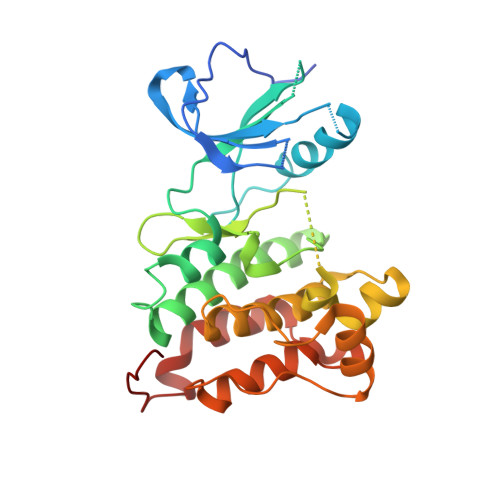Small molecule recognition of c-Src via the Imatinib-binding conformation.
Dar, A.C., Lopez, M.S., Shokat, K.M.(2008) Chem Biol 15: 1015-1022
- PubMed: 18940662
- DOI: https://doi.org/10.1016/j.chembiol.2008.09.007
- Primary Citation of Related Structures:
3EL7, 3EL8 - PubMed Abstract:
The cancer drug, Imatinib, is a selective Abl kinase inhibitor that does not inhibit the closely related kinase c-Src. This one drug and its ability to selectively inhibit Abl over c-Src has been a guiding principle in virtually all kinase drug discovery efforts in the last 15 years. A prominent hypothesis explaining the selectivity of Imatinib is that Abl has an intrinsic ability to adopt an inactive conformation (termed DFG-out), whereas c-Src appears to pay a high intrinsic energetic penalty for adopting this conformation, effectively excluding Imatinib from its ATP pocket. This explanation of the difference in binding affinity of Imatinib for Abl versus c-Src makes the striking prediction that it would not be possible to design an inhibitor that binds to the DFG-out conformation of c-Src with high affinity. We report the discovery of a series of such inhibitors. We use structure-activity relationships and X-ray crystallography to confirm our findings. These studies suggest that small molecules are capable of inducing the generally unfavorable DFG-out conformation in c-Src. Structural comparison between c-Src in complex with these inhibitors allows us to speculate on the differential selectivity of Imatinib for c-Src and Abl.
Organizational Affiliation:
Department of Cellular and Molecular Pharmacology, Howard Hughes Medical Institute, Genentech Hall, 600 16(th) Street, University of California, San Francisco, San Francisco, CA 94158, USA.















